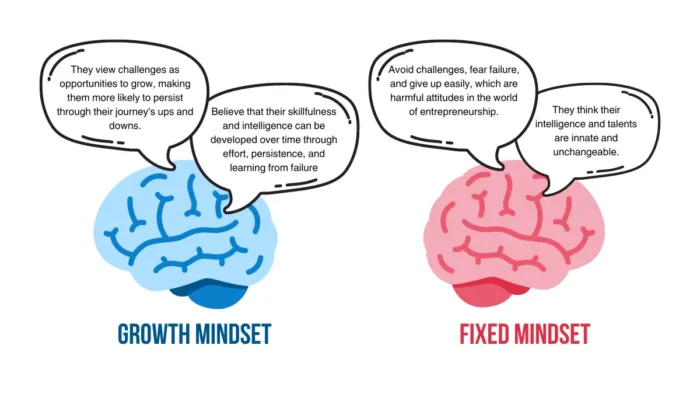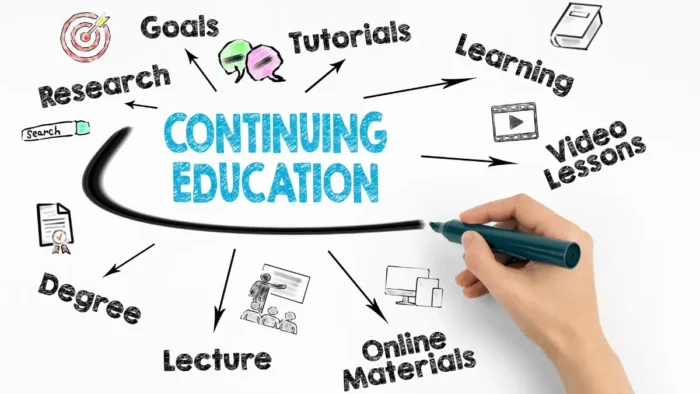Visualize a creative workplace where all your staff members actively increase their skill sets and solve every problem from fresh viewpoints and perspectives. Developing a culture of continuous learning among your team members is not just a dream—it is a reality.
However, how can you establish a setting like that? Here’s a road map with lots of advice to help you get started.
Set an Example for Continuous Learning
Establishing a culture of learning begins at the top of your organization. Leaders must always be open supporters who commit to continuous improvement. If this is the case, they can allocate a specific budget and designate particular work hours so that personnel can focus on educational activities.
Setting an example for your team means demonstrating that you constantly seek ways to learn, whether by signing up for online courses or attending workshops.
Keep in mind that your sense of accomplishment is viral. Leaders who prioritize learning send a strong message that both professional and personal development are significant.
Make Learning Accessible and Engaging
Continuous learning and development shouldn’t feel burdensome. Luckily, some helpful tools, such as training software, can help the process evolve. You can find the specific best online training software for your team and ensure your employees always have the right tools and direction to grow and develop within the organization.
Here are some tips for making it a convenient and pleasurable experience:
- Purchase an LMS (learning management system): By serving as a centralized location for distributing and storing educational resources, an LMS empowers employees to easily access materials at their own pace.
- Make top-notch material accessible: Look for interesting educational resources that are significant for the needs and preferences of your staff.
- Use gamification: If you want to make learning more engaging and enjoyable for your team members, use gaming features like leaderboards, badges, and points.
Employee engagement and involvement will grow when you make learning exciting and attainable.
Celebrate Learning and Recognize Achievements
Make sure that your efforts are acknowledged. Celebrate and appreciate the efforts made by your team to learn. Announce staff accomplishments in business newsletters or team meetings. Also, consider introducing stipends for learning: extend compensation in exchange for achieving particular qualifications or learning objectives.
Acquire the understanding that emerging skills can lead to greater responsibility and professional growth. Additionally, honoring education demonstrates its value and encourages individuals to always work toward bettering themselves.
Identify Needs: Understand Your Team’s Current Learning Position
Recent statistics show that specific emerging skills, such as analytical and creative thinking, are at the top of the list of preferred competencies for many companies. However, only some team members are keen on acquiring the same skills. Here’s how to identify particular requirements:
- Analyze the skills gap: Assess the team’s existing skill set and compare them with what will be essential for future success. In such a way, you will identify areas that require further training.
- Encourage honest communication: Encourage everyone on your staff to have regular conversations. Find out what areas they want to improve and their preferred continuous learning strategies.
Developing an educational curriculum that appeals to every team member by considering their unique requirements and preferences is possible.
Provide Various Continuous Learning Opportunities
The days of universally applicable training programs are long gone. Today, the secret is to provide various learning opportunities, such as online courses, workshops, and business conferences.
Informal learning is another great option. Promote team knowledge-sharing meetings where employees can share their knowledge and areas of expertise. Consider mentorship programs that will help transfer information and provide individualized assistance by pairing more seasoned team members with less seasoned ones.
Provide compact learning modules, brief online videos, or podcasts to facilitate learning on the go—known as microlearning. In such a case, everyone can participate effectively by utilizing a range of learning styles and preferences.
Encourage a Growth Mindset

You must develop a growth mindset in your team members because it is vital to a learning culture. To this end, you can start promoting the idea that your employees can acquire different abilities and skills through consistent learning and experience.
For example, failures can be considered a learning process rather than setbacks. Still, experiential learning is the best possible technique if the consequences of failure are not catastrophic.
Promoting calculated risks and investigating innovative approaches to problem-solving can encourage trial and error. Additionally, constructive criticism that inspires others to grow and learn from their mistakes is always a good idea.
In Conclusion
Creating a culture of lifelong learning takes time and work, but the benefits are clear and practically inevitable. By following the steps in this article, you can get closer to highly motivating your team to stay competitive and up for new challenges while welcoming innovation to drive professional success.





